How Myst Taught a Generation of Gamers to Explore New Worlds
The creators revisit their hit game 25 years later.
You are lost, but not worried. Your curiosity about the secrets of this new place propels you forward, though your direction remains unknown. The whimsical sound of seabreeze clues you in to the fact that you’ve landed on an island—a seemingly deserted one with no one to guide you. Though the environment is foreign, the thrill of exploration is familiar and fun.
Twenty-five years ago, two brothers—Rand and Robyn Miller—designed a new destination in the form of their wildly successful computer game Myst. The hybrid mystery-logic game, in which you, the anonymous explorer, solve a series of puzzles to gain access to alternate dimensions and uncover the sinister storyline, debuted on the then-novel CD-ROM format. Consumers soon discovered that the flatness of the disc belied the three-dimensional topography of the world within.
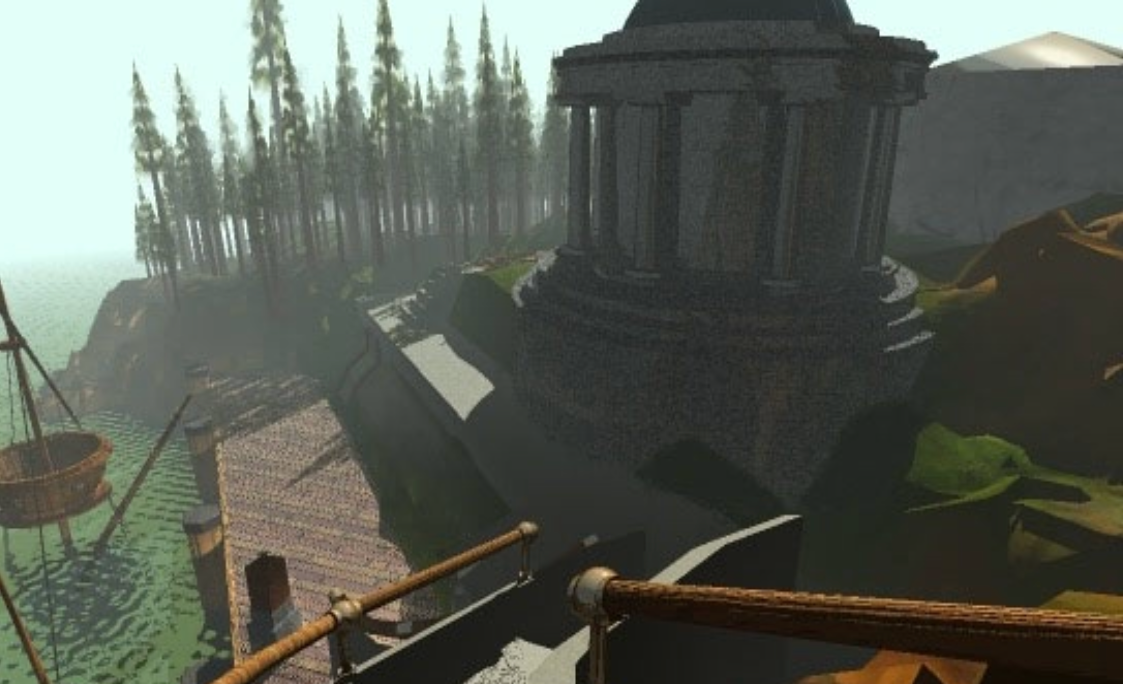
In its first seven months on the global market, the game sold 200,000 copies and held its title as the top-selling game (to the tune of six million copies, and counting) until The Sims usurped it in 2002. Somehow, the brothers Miller had cracked the code behind what makes a game with little hype surrounding it a multimillion-dollar success. Part of that formula was how hard the Millers leaned in to innovation. But more centrally, what distinguished Myst was the concept that making moral choices is an advantage of adventure, and that exploration becomes more satisfying when one faces adversity followed by triumphant relief.
Myst created a new language in interactive media: one that depended less on violence and hemorrhaging “lives” and instead on our natural human interest in free choice and overcoming obstacles. Exploring Myst’s island was a first-person and non-linear experience. The narrative depended wholly on the player’s decisions for what to do next. The possibilities were seemingly endless, and were decidedly self-determined.
Though the 1980s produced text-based adventure games like The Hitchhiker’s Guide to the Galaxy that used fiction as the game’s central vehicle, when Myst first hit shelves in 1993 it was still an underdog: There was no time limit, so where’s the urgency? There were no machine guns, so where’s the thrill? Scores of computer games rotate on the axis of adventure. But what Myst reinforced is that exploration—in both the virtual and the real world—has the potential to teach us a lot about ourselves.
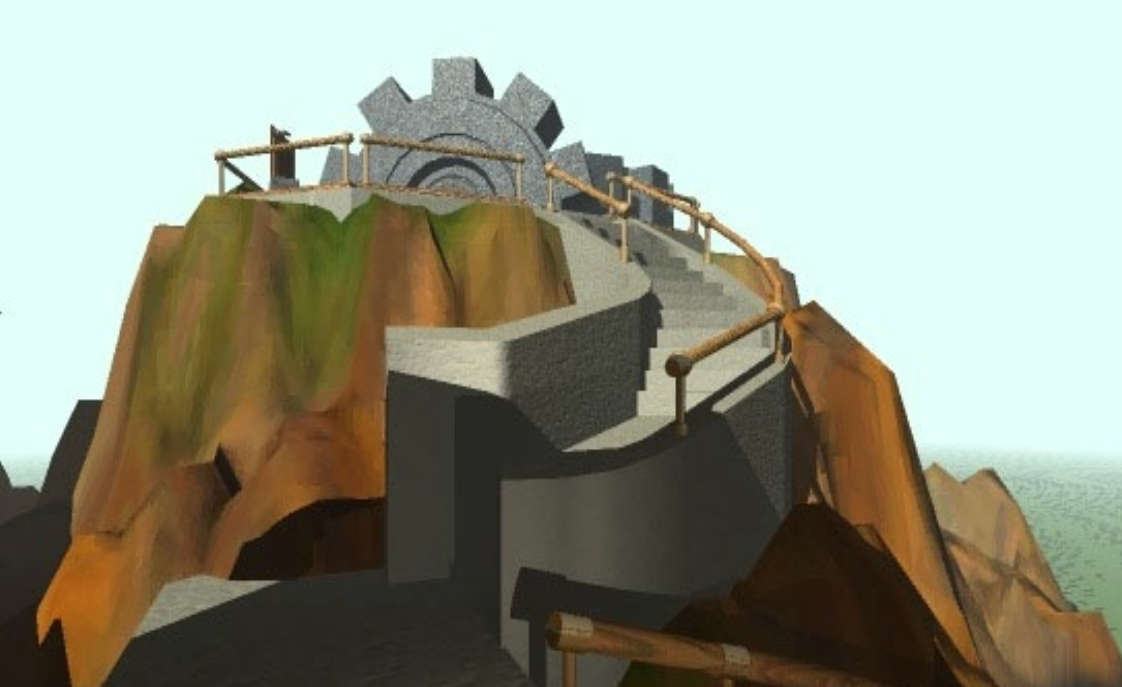
Robyn and Rand, who at the time of Myst’s development jointly operated under their game production company Cyan Inc., say that Myst (their first adult game) began as an experiment. “I’m not sure we knew exactly what we were doing, a lot of what we were putting into the game was instinctive,” Rand says. The brothers’ instincts had been formed by previous computer games they had made for children, like Cosmic Osmo. This game features a point-and-click interface and takes place on a friendly spaceship, giving players the ability to explore different planets through various animated shortcuts, like a miniature mouse hole.
One of the distinguishing characteristics of Myst was the first-person point of view. It had worked well in the narrative of their kids games, so they maintained it for their adult one. The brothers also actively worked against the dominating computer game template at the time, which was predicated on competition and “being killed and starting over,” Rand says. “In reality you don’t die every five minutes. So we thought, why don’t we build something where it feels a little ominous, that feels interesting like it could be threatening … people might expect a jump scare, but it won’t come.”
The tension that mounts throughout the game is thanks to two feuding characters, brothers Sirrus and Achenar, and their mysterious, slowly unfolding backstory. Both have been imprisoned in books and it’s up to the player to choose which brother to free at the end. But things are not what they seem and betrayal is seemingly inevitable.
The parallels between Myst Island and reality multiply: two brothers were created by two brothers, and the quest for morality became a useful path to success both inside the computer and out. “In some ways, Myst became our adventure,” Rand says. “We were truly lucky to have had our adventurous life mimic the game and the surprises. We had friction in life and we overcame it, and now you look back 25 years later and you say: Wow. I guess we played the game well and got rewarded.”
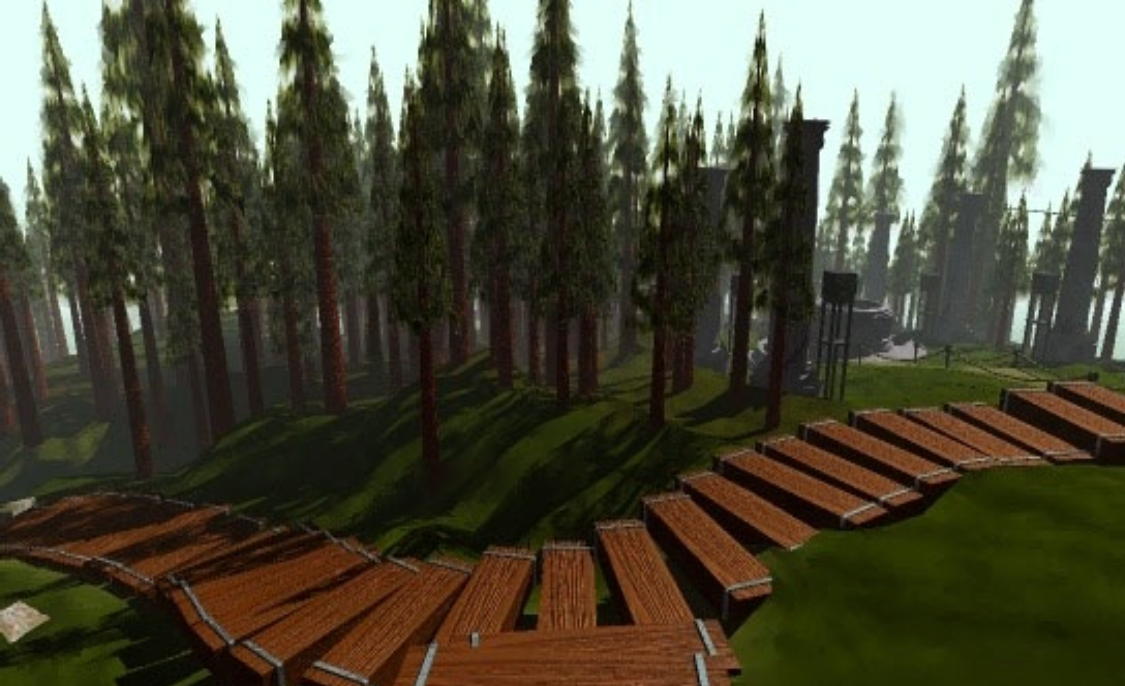
The mysterious environment of the island makes exploring it equal parts intimidating and exciting. And its elements, both surreal and slick, bear a strong resemblance to the environment of Cyan’s homebase: the Pacific Northwest. “People who visited our offices would remark about the similarity between the pine trees in the game and the piney woods of the Northwest,” Robyn says. “I’m sure the environment subconsciously found a place in our design.”
According to the game developer, operating from an office just outside of Spokane, Washington had its pros and cons. “We were unable to communicate with a broader community of game creators, or even technology enthusiasts. I remember the shock of first moving to Spokane and feeling like I was totally disconnected,” Robyn notes. But the silver lining of creating a cerebral computer game in Washington state? Silence. “In Spokane, we were the only company making games. In a way, this might have been a positive. Instead of looking at what everyone else was doing, we were forced to look inward and think only about what we wanted in a game.” The lush isolation of this region is mirrored in the feeling of playing Myst—picturesque and private. By isolating the player’s anonymous solo character on Myst Island, the two brothers were able to challenge users’ sense of self.
“We wanted the player to make some sort of ethical choice,” Robyn says. In the narrative, the main character is often tasked with making tough choices to drive their journey forward. During the design phase, Robyn says they asked themselves: “When people make the wrong decision [in the game], would they feel the same feelings that they’d feel if they made the wrong decision in real life?” Some might argue that the stakes are dramatically lower in a computer game—that without a society around you to judge your morality, those choices ultimately don’t matter. But Myst aimed for a greater moral resonance. “We just had this aspiration that a player will have legitimate emotion and that they’d examine themselves because of it,” Robyn says. “[We hoped they’d] ask: Wait, why am I feeling this if it’s just a game?”
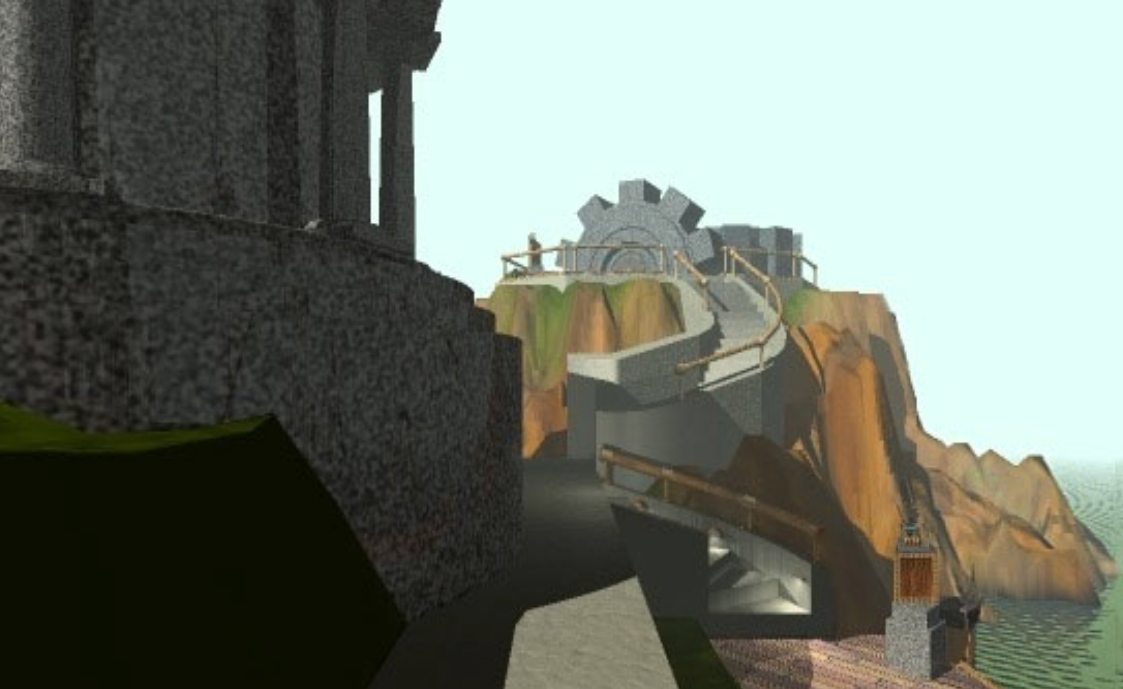
According to Rand, the answer is adversity. “The issue was just the friction,” he says. The friction he’s referring to is a synonym for the logic-driven puzzles included in the game, which serve to frustrate the player into a slower pace of play. “You get a little bit of tension and then you get the resolution, and it’s this great feeling. You’re a part of that resolution, you’re the one actually overcoming that frustration … it has a real profound, satisfying effect for somebody playing the game.”
Though the environment of Myst is dreamlike, the real-world relevance was no doubt instrumental in its success. Much like the joy we get as travelers to new places, which are steeped in unfamiliar symbols we must navigate based on some latent internal compass, Myst activated an adventure-based adrenaline. “The way Robyn and I looked at it was: The fiction and the fantasy worlds we enjoyed, whether that’s science fiction or Lord of the Rings, it felt like they had this really interesting balance between reality and dreamlike,” Rand says. “In other words, if you push too hard on the reality, it becomes a little mundane, or too normal … and if you push too hard in the dreamlike, it doesn’t feel relatable enough. Striking a balance between the two made it viable, like this could be a real thing.”
The books the brothers read when they were younger influenced their understanding of exploration and the atmosphere of their computer-generated island. “I was reading Mysterious Island [by Jules Verne] when we started designing Myst,” Robyn says. “It’s about a group of people shipwrecked on a desert island. As they try to survive, they begin to encounter mysterious evidence of a dark presence.” Additionally, Robyn says that when he and Rand were thinking about portals and how to create ways for players to travel to different worlds (which are called “ages” in Myst), they were “really inspired by the sensibility in books like the Chronicles of Narnia” and tried to approximate its thick, heavy mood.
In 1993, when the game debuted, desktops operated as islands: totally isolated from the outside world, a digitized room of one’s own. Myst became an analog for the entire computer gaming experience. It provided players a chance to create their own identity and path, much like the internet and its social media offshoots allow us to do today.
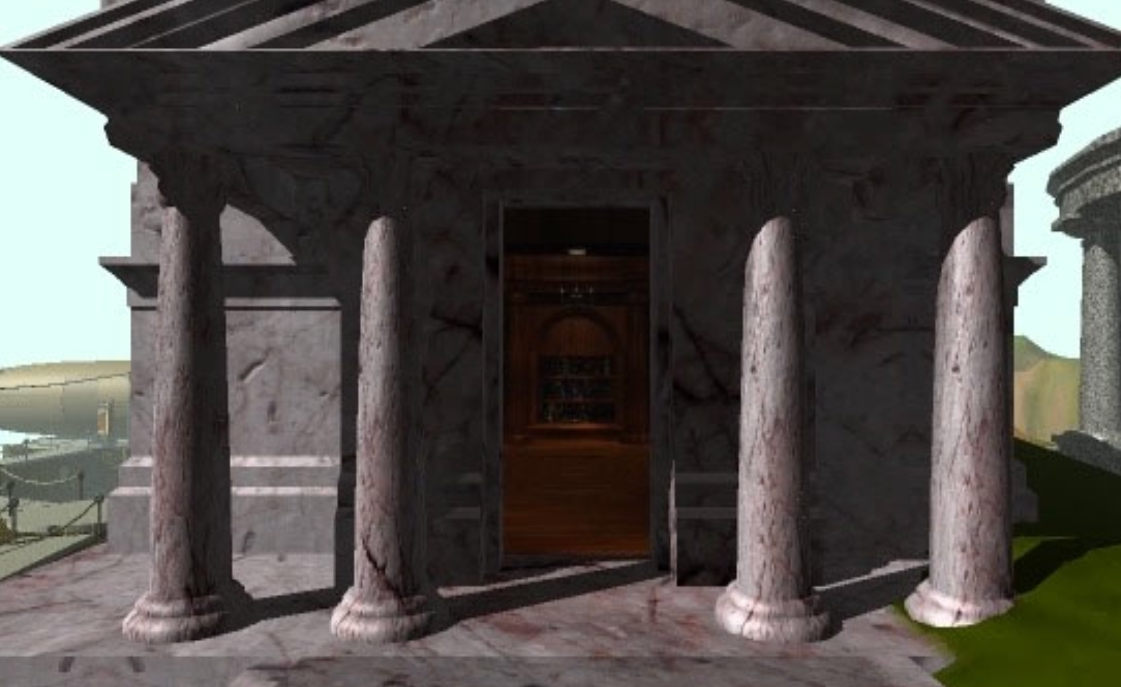
What is it about a self-determined experience that keeps the spirit of exploration alive? “We’re humans, we like to choose. It feels like that’s our superpower,” Rand says. “Animals don’t have that, they don’t get to choose, they kind of just run by the instincts. We get to override our instincts … that’s really powerful.” Other forms of entertainment, like movies, allow us to watch adventure performed by protagonists, but we don’t get the chance to truly experience it. “In computer games and active media, we have to make those choices, and that’s like life.”
The spirit of exploration, particularly one that leads you into the curious unknown, is the middle space in the Myst / Atlas Obscura Venn diagram. Of this, Rand says: “[Atlas Obscura] opens up the fiction of real life, and we kind of make the fiction feel like real life. It’s the same goal for both—it’s to pique someone’s sense of wonder and to play off their desire to see what’s around the next corner and intrigue them to go forward and to explore a little more.”
Much like discovering a new place somewhere in the world, the only prerequisite for playing Myst is a curious mind. And Rand and Robyn cultivated a fanbase of explorers by designing a world that was believable, albeit unreal. “I think the power of this game was not with the characters,” Robyn says. “It took me so many years to realize that the power of all games are not with the characters but instead the actual environment.”
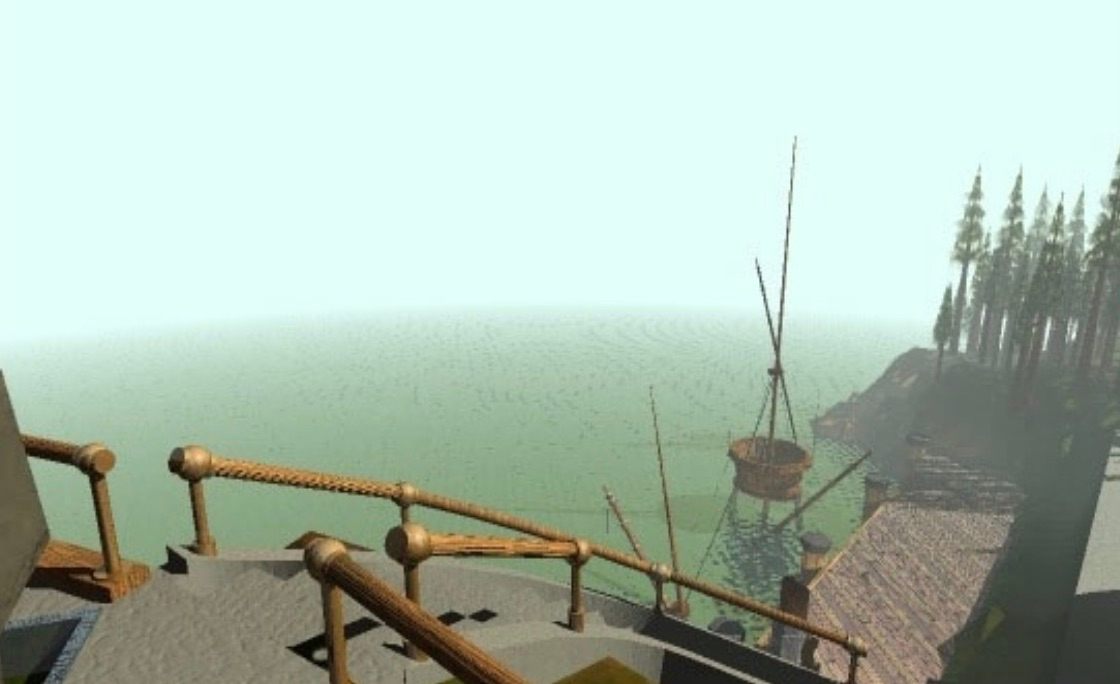
Twenty-five years after its release, Myst’s appeal endures. In May, fans aching for Cyan’s updated version of the game crowdfunded $247,500 in eight hours.
Those who love Myst have often complimented the brothers on the game’s ability to make them forget that they were in the real world. Both the graphics and the novel-like narrative were so convincing, that devotees began to feel truly transported—as if they were experiencing a new place based on coordinates they’d discovered.
“That felt like we had accomplished what we were going for,” Rand says. “Making people feel like this was an alternative world that they could explore.”



-41413e23-403d-4255-a911-19ba3fae6f1d.webp)





Follow us on Twitter to get the latest on the world's hidden wonders.
Like us on Facebook to get the latest on the world's hidden wonders.
Follow us on Twitter Like us on Facebook